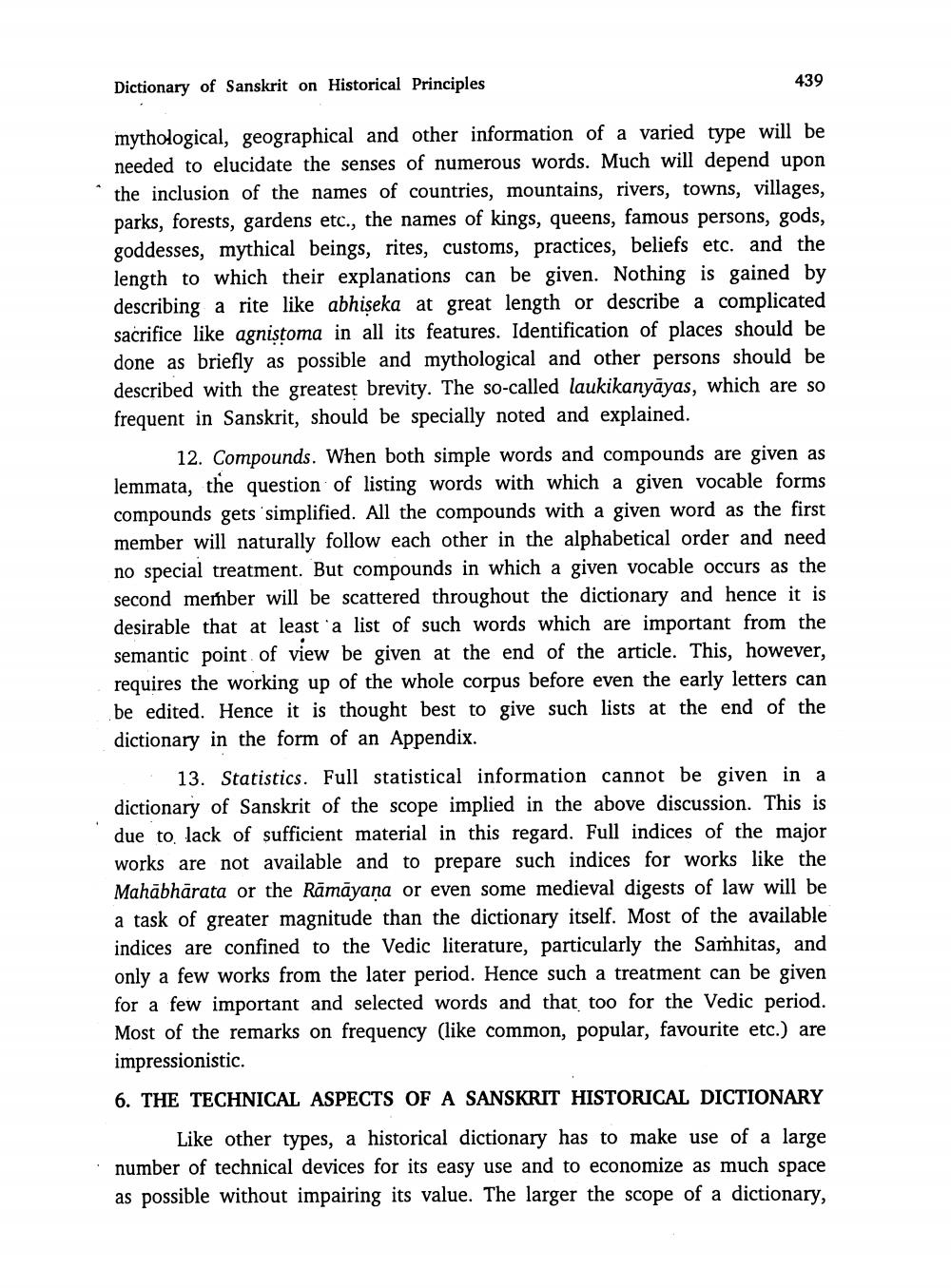________________
Dictionary of Sanskrit on Historical Principles
439
mythological, geographical and other information of a varied type will be needed to elucidate the senses of numerous words. Much will depend upon the inclusion of the names of countries, mountains, rivers, towns, villages, parks, forests, gardens etc., the names of kings, queens, famous persons, gods, goddesses, mythical beings, rites, customs, practices, beliefs etc. and the length to which their explanations can be given. Nothing is gained by describing a rite like abhiseka at great length or describe a complicated sacrifice like agnistoma in all its features. Identification of places should be done as briefly as possible and mythological and other persons should be described with the greatest brevity. The so-called laukikanyāyas, which are so frequent in Sanskrit, should be specially noted and explained.
12. Compounds. When both simple words and compounds are given as lemmata, the question of listing words with which a given vocable forms compounds gets 'simplified. All the compounds with a given word as the first member will naturally follow each other in the alphabetical order and need no special treatment. But compounds in which a given vocable occurs as the second member will be scattered throughout the dictionary and hence it is desirable that at least a list of such words which are important from the semantic point of view be given at the end of the article. This, however, requires the working up of the whole corpus before even the early letters can be edited. Hence it is thought best to give such lists at the end of the dictionary in the form of an Appendix.
13. Statistics. Full statistical information cannot be given in a dictionary of Sanskrit of the scope implied in the above discussion. This is due to lack of sufficient material in this regard. Full indices of the major works are not available and to prepare such indices for works like the Mahābhārata or the Rāmāyana or even some medieval digests of law will be a task of greater magnitude than the dictionary itself. Most of the available indices are confined to the Vedic literature, particularly the Samhitas, and only a few works from the later period. Hence such a treatment can be given for a few important and selected words and that too for the Vedic period. Most of the remarks on frequency (like common, popular, favourite etc.) are impressionistic. 6. THE TECHNICAL ASPECTS OF A SANSKRIT HISTORICAL DICTIONARY
Like other types, a historical dictionary has to make use of a large number of technical devices for its easy use and to economize as much space as possible without impairing its value. The larger the scope of a dictionary,




